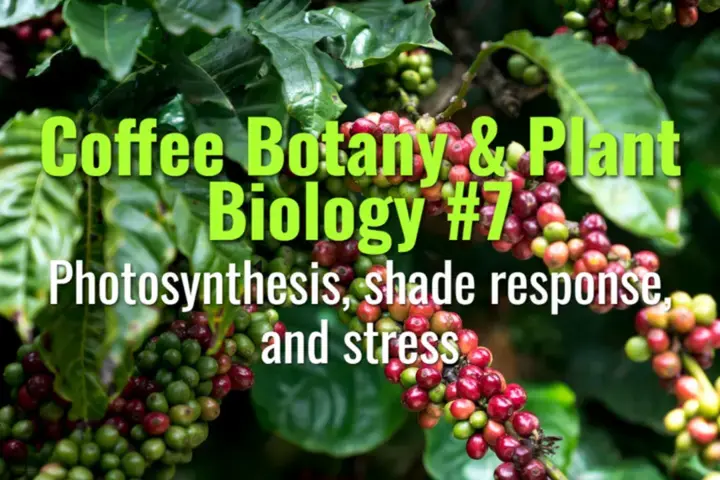Photosynthesis, shade response, and stress
This topic explores how coffee plants capture energy through photosynthesis, how they respond to shade versus direct sunlight, and how environmental stress affects their growth, yield, and cup quality.
- Coffee Basics Nerds
- 2 min read
Article 7 of 12 in Coffee Botany & Plant Biology/

Photosynthesis in Coffee
- Process: Like all green plants, coffee uses chlorophyll in leaves to convert sunlight, CO₂, and water into sugars and oxygen.
- Rate: Arabica generally has a lower photosynthetic capacity than Robusta, partly explaining its slower growth and lower yields.
- Efficiency factors: Leaf age, stomatal conductance, and nutrient availability influence photosynthesis.
Shade Response
- Natural habitat: Coffee evolved as an understory shrub in African forests, adapted to partial shade.
- Shade-grown systems: Moderate shade (30–50%) reduces heat and water stress, improves biodiversity, and slows cherry maturation for better flavor.
- Full sun systems: Increase photosynthesis and yields in the short term but demand higher fertilizer input and may stress the plant.
- Species differences:
- Arabica benefits from shade at lower altitudes.
- Robusta tolerates more sun and heat.
- Agroforestry: Planting shade trees provides habitat, soil enrichment, and microclimate regulation.
Stress Factors
- Water stress (drought): Leads to leaf curling, reduced photosynthesis, flower abortion, and lower yields.
- Heat stress: High temperatures accelerate ripening but reduce bean density and flavor complexity.
- Cold stress: Frost can devastate plantations, especially Arabica at high elevations.
- Nutrient stress: Deficiencies (nitrogen, magnesium, potassium) directly reduce photosynthetic efficiency.
- Light stress: Excess sunlight can scorch leaves, while too little limits photosynthesis.
Plant Responses
- Stomatal regulation: Coffee closes stomata under drought stress to conserve water, but this also reduces CO₂ uptake.
- Leaf morphology: Thicker leaves, waxier cuticles, and smaller stomata are adaptive traits in Robusta for heat tolerance.
- Photoinhibition: Excess light causes damage to chloroplasts; shade reduces this risk.
Agricultural Implications
- Shade management balances yield and quality.
- Irrigation and mulching reduce water stress.
- Soil fertility programs support sustained photosynthesis.
- Selection of suitable cultivars mitigates stress risk.
Lasting Importance
Photosynthesis drives coffee growth and bean development, while shade response and stress tolerance determine how plants adapt to changing climates. Farmers who manage light, water, and nutrients strategically can optimize both productivity and cup quality.